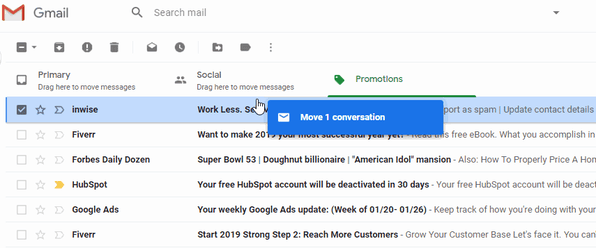What’s the deal with NLP?
December 03, 2021 | Ian Hamilton-Burge, Director of Customer Solutions |
Industry Articles
Machine learning. Artificial intelligence. Predictive analytics.
If you’re buying sales enablement software these days, you’ve undoubtedly heard these overused buzzwords lobbed into a pitch.
You may also now be hearing the term NLP more as companies attempt to differentiate themselves from the crowd. The term Natural Language Processing (NLP), came later to the jargon party but don’t be fooled, the technology has been around for years and you’re already using it throughout your daily life.
Zymewire has been utilizing Natural Language Processing for more than a decade and we feel it’s long overdue to pull back the curtain. Here, we unpack NLP technology and offer some guidance on how it should (and shouldn’t) factor into your software buying decisions.
What is NLP?
NLP is a tool for making sense out of unstructured text such as transcribed human speech, emails, news articles, journals and social media. The way we share information is not always straightforward, so having a way to reliably organize and categorize information in our subjective communications can be useful. Humans overall are much better than computers at this information extraction on a small everyday scale, but we struggle to navigate huge amounts of unstructured text.
Let’s start with a brief theoretical example outside of the world of B2B SaaS for a second.
It’s a few days before the start of the school year for an elementary school of 300 children. This school has a cafeteria and needs to know all of the food sensitivities, allergies, and preferences of the kids this year. But oh no! The principal has left this until the last minute and panics, sending out a rushed email to all the parents asking for this information.
As the replies start rolling in, the principal realizes that it is going to be a monumental task to interpret all this information and get it into a usable spreadsheet for the cafeteria staff because of responses like this:
“My daughter Suzie Collins is allergic to peanuts and really dislikes broccoli. Her brother Kyle isn’t allergic to peanuts but also dislikes broccoli and is gluten sensitive”
A human reading this can easily categorize the parts of this sentence into usable information for the cafeteria’s purpose:
|
Student Name |
Allergy |
Sensitivity |
Preference |
|
Suzie |
Peanuts |
N/A |
No broccoli |
|
Kyle |
N/A |
Gluten |
No broccoli |
The challenge is doing this for 298 more students. No doubt the principal could complete this task with high accuracy, but it’s going to take a long time and there’s a lot of other work to be done before the first day of school.
Enter NLP in this theoretical scenario. Computers are still a long way off from the level of pattern recognition and contextualizing that humans do so well, but NLP technology is up to the task of reading through hundreds of emails and pulling out the required information into a usable form. Depending on how you are using NLP, you may want to leverage some existing data for it to reference in its task such as lists of student names, food allergies, and food items.
NLP goes to work here associating each student name with a certain relationship to different foods and interpreting negative words like “isn’t” in determining that Kyle is not allergic to peanuts. Depending on the specificity and quality of the NLP tool, the principal will have to accept a level of inaccuracy.
This one example has hopefully already prompted some questions and concerns for you.
The most urgent being that, when it comes to food allergies, shouldn’t the only acceptable level of accuracy be 100%? And is the principal really going to take the time to buy or build an NLP tool for this specific, one-off scenario? With only a few days before the first day of school, the principal panicked and sent a quick email, but in hindsight now realizes that an online form for entering student names and checking off boxes of a preset list of food items would have been much faster and reliable. The same applies to the online world of text-based information. Often structured data is going to be more reliable, but where it doesn't exist and/or you have a pile of data and a practical use case, NLP may be able to lend a hand.
Examples of NLP in everyday online life
You’re likely already using products that incorporate NLP without even realizing it. We’ve compiled a brief list of these products and touch on how they use NLP:
Did you mean? – Spelling, grammar, and translation
Every time you mistype a word in Google Search, NLP is behind the scenes asking you if you meant to search for the correct spelling of the word. Google amasses large amounts of search data for NLP spell checking. You need a lot of this data because the spellcheck NLP evaluates things like the most commonly used words and their number of occurrences. You likely aren’t noticing it as often, but Google Search (along with Spellcheck software like Grammarly) also corrects your grammar:
Translators like “Google Translate” also leverage NLP’s ability to interpret context and grammar to give you much more accurate translations than those confusing and much too literal translations that you may remember when you tried out Google Translate in the early 2000s.
Digital Voice Assistants
Amazon Echo, Google Assistant, and Siri all use NLP to interpret your different voice commands and come up with the appropriate response. First, they convert your verbal speech into written text and then NLP runs with it to break down the intent and context of your request. This deconstructed text version of your original voice command is then passed along as a specific order to execute a process in a service or app.
“Hey Alexa, play me a country song”
Written text command translated: “Open Amazon music and play a random song from country music genre”
No not that song! A real country song by someone like Dolly Parton”
Email filters and folders
Email clients like Gmail are now leveraging NLP to help you sort through those many, many, many emails you receive each day. By looking at some basic contextual clues in the subject lines and contents of emails, the NLP works to classify your emails into “primary”, “social” and “promotional” folders.

SaaS tools and B2B information
With NLP being used by practically everyone with a smartphone today, companies shouldn’t be boasting about NLP use in their software products; you should pretty much be expecting it at this point!
As always, when looking at software to solve a problem or meet a need, you should be thinking about what that software is ultimately delivering:
Is this sales software going to help us create more leads? Reach more prospects? Close more deals?
NLP is only ever going to partially contribute to answering these questions in the affirmative, so focusing on the potential value and outcomes is still what matters most.
In the context of sales prospecting tools, NLP can perform useful functions like helping to improve the quality of your searches, parsing out sections of relevant text, translating news, and categorizing certain information. But if that’s all that the “sales tool” is doing, then it’s more of a database—and you’re going to have to spend a lot more time integrating the information with your other sales information and processes before you can extract any major value. This highly manual and error-prone task of connecting the dots across sales apps and information is why we constantly hear from Sales Managers that their teams don’t even use these database products.
When Zymewire was first conceived, we started from a place of asking what challenges and needs salespeople had in the pharma/biotech space. We understood that NLP would be part of the solution—and indeed, Zymewire leverages NLP millions of times a year to help you surface leads and opportunities more effectively—but we knew that it would only be one of many instruments in the Zymewire orchestra. It takes a complex and curated set of tools, systems, and data managed by highly skilled human teams to empower our clients to increase their sales productivity and performance.
Want to see NLP in action? If you’re a Zymewire user, click here to see a live example. Can you tell the different ways in which NLP is being used? Reach out if you want to know!





.png?width=500&name=Q3%202024%20Biopharma%20Recap%20(Zymewire).png)

Comments